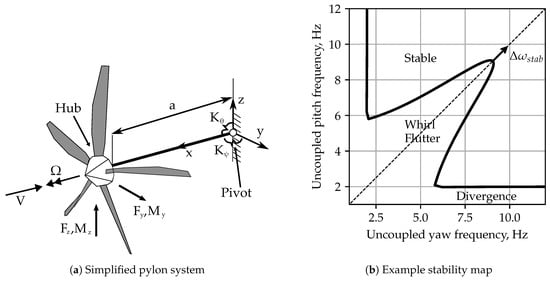Structural Dynamics and Aeroelasticity
A topical collection in Applied Sciences (ISSN 2076-3417). This collection belongs to the section "Aerospace Science and Engineering".
Viewed by 3031Editors
Interests: aeroelasticity and structural dynamics; aircraft conceptual and preliminary design; morphing aircraft; multi-disciplinary design optimization
Special Issues, Collections and Topics in MDPI journals
Interests: applied aeroelasticity; dynamics of aerospace systems
Interests: multi-disciplinary optimization; morphing technologies; structural dynamics; finite-element modeling; compliant mechanisms; wind tunnel tests; aeroelasticity
Special Issues, Collections and Topics in MDPI journals
Interests: aeroelasticity; loads; structural dynamics; adaptive aircraft structures; aeroelastic optimization
Interests: computational and experimental mechanics; multidisciplinary design optimization; fluid–structure interaction; active aeroelastic and morphing aircraft structures; aeronautics and space; ocean energy and technology
Topical Collection Information
Dear Colleagues,
Aeroelasticity is a well-known research field that investigates phenomena emerging due to the interaction between fluids and elastic bodies, and more precisely among aerodynamic, inertial and elastic forces. While the typical application of aeroelasticity is in the branch of aircraft engineering, aeroelastic issues are also of concern in civil engineering, such as slender buildings, suspension bridges and electric lines; transport engineering, such as cars and ships; or power engineering, such as compressors and turbines.
Aeroelastic phenomena have been relevant since the beginning of aeronautics, and over the years a complete set of analytical, numerical, and experimental methods have been proposed, validated, and included in the certification process.
New problems have recently been of great interest, namely those relating to aeroelastic interactions with active control systems installed on aircraft (e.g., those related to load-alleviation systems), giving rise to the aeroservoelasticity branch of study. Finally, the adoption of multi-disciplinary optimization frameworks able to take advantage of aeroelastic deformation, passively or actively, promises to enable the design of adaptive structures able to guarantee structural mass reduction and performance improvements.
This Topical Collection aims to support the international scientific community in the dissemination of knowledge on analytical, numerical, and experimental methodologies related to the structural dynamics of deformable bodies and their fluid–structure interactions.
Aeroelasticity requires a multi-disciplinary approach with a correct blend of numerical approaches and experimental validations, which are well connected with the purpose of this journal, which provides an advanced forum on all aspects of applied sciences. For this reason, in this Topical Collection we welcome original research articles and reviews regarding research areas including (but not limited to) the following:
- Stability and response problems related to the fluid–structure interaction of flexible bodies;
- Time-domain, linear and nonlinear aeroelasticity;
- CFD-based aeroelasticity;
- Dynamic loads;
- Experimental techniques in aeroelasticity and structural dynamics;
- Active aeroelastic control and aeroelasticity of adaptive/morphing structures;
- Aeroelasticity of rotary wing aircraft;
- Aeroelasticity and structural dynamics modelling and optimization.
We look forward to receiving your contributions.
Prof. Dr. Sergio Ricci
Prof. Paolo Mantegazza
Dr. Alessandro De Gaspari
Prof. Dr. Jonathan E. Cooper
Prof. Dr. Afzal Suleman
Prof. Hector Climent
Collection Editors
Manuscript Submission Information
Manuscripts should be submitted online at www.mdpi.com by registering and logging in to this website. Once you are registered, click here to go to the submission form. Manuscripts can be submitted until the deadline. All submissions that pass pre-check are peer-reviewed. Accepted papers will be published continuously in the journal (as soon as accepted) and will be listed together on the collection website. Research articles, review articles as well as short communications are invited. For planned papers, a title and short abstract (about 100 words) can be sent to the Editorial Office for announcement on this website.
Submitted manuscripts should not have been published previously, nor be under consideration for publication elsewhere (except conference proceedings papers). All manuscripts are thoroughly refereed through a single-blind peer-review process. A guide for authors and other relevant information for submission of manuscripts is available on the Instructions for Authors page. Applied Sciences is an international peer-reviewed open access semimonthly journal published by MDPI.
Please visit the Instructions for Authors page before submitting a manuscript. The Article Processing Charge (APC) for publication in this open access journal is 2400 CHF (Swiss Francs). Submitted papers should be well formatted and use good English. Authors may use MDPI's English editing service prior to publication or during author revisions.
Keywords
- aeroelasticity and structural dynamics
- CFD-based aeroelasticity
- active aeroelastic control
- aeroelastic optimization
- linear and nonlinear aeroelasticity
- aerosevoelasticity












